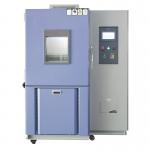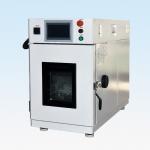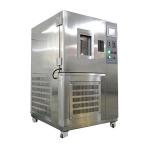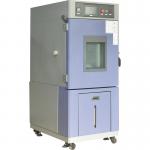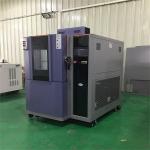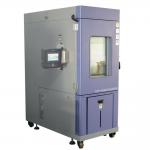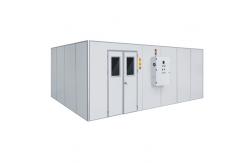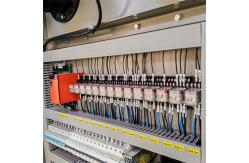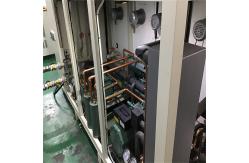In the modern industrial landscape, where product quality and
durability are of paramount importance, the Highly Accelerated
Aging Test Chamber Climatic Test Chamber emerges as a crucial tool.
This sophisticated equipment is designed to subject products to
extreme environmental conditions, simulating the passage of time
and stressors that they may encounter over their lifespan. The Highly Accelerated Aging Test Chamber is specifically
engineered to conduct aging tests on a wide variety of products. It
finds extensive applications in industries such as electronics,
automotive, aerospace, and consumer goods. The primary objective is
to accelerate the natural aging process by exposing products to
harsh temperature, humidity, and other climatic conditions. By
doing so, manufacturers and researchers can predict the long-term
performance and reliability of products, identify potential
weaknesses, and make informed decisions about product design,
materials, and manufacturing processes. This not only helps in
ensuring product quality but also in reducing the time and cost
associated with traditional long-term testing methods. - Robust and Versatile Construction
- The chamber is constructed with a heavy-duty framework, typically
made of high-strength alloy steel, to withstand the rigors of
continuous and extreme testing. The exterior is designed to be
durable and resistant to corrosion, ensuring a long service life.
The interior is lined with a non-reactive and smooth surface, such
as stainless steel or a specialized corrosion-resistant coating, to
prevent any interaction between the chamber and the tested
specimens. The door is engineered for a tight seal, featuring a
reliable locking mechanism and a heavy-duty gasket. It also
includes a viewing window, usually made of tempered glass with
anti-fog and anti-scratch properties, enabling visual monitoring of
the testing process without disturbing the internal environment.
- Precision Climatic Control Systems
- Temperature Control: The temperature control system is highly
accurate, capable of maintaining a wide temperature range,
typically from -70°C to +180°C, with an accuracy of ±0.3°C. It
utilizes advanced refrigeration and heating technologies, along
with a sophisticated feedback loop and multiple temperature
sensors. This ensures uniform temperature distribution throughout
the chamber and minimal temperature fluctuations over time. The
control panel allows for easy programming and adjustment of
temperature settings, including the ability to create complex
temperature profiles with ramping and holding periods.
- Humidity Control: The humidity control system is equally precise,
capable of achieving humidity levels from 10% to 98% RH (Relative
Humidity), with an accuracy of ±3% RH. It employs a combination of
humidifiers and dehumidifiers, along with a well-designed air
circulation system. The chamber is equipped with humidity sensors
that continuously monitor the internal humidity, and the control
system adjusts the humidification or dehumidification processes
accordingly. This allows for the creation of stable and dynamic
humidity environments, mimicking real-world scenarios.
- Other Climatic Parameters (Optional): Some models of the chamber
can also control additional climatic parameters such as UV
radiation, ozone levels, and air pressure. These features are
especially useful for testing products that may be exposed to such
conditions in their actual usage, such as outdoor electronics or
automotive components.
- Advanced Instrumentation and Data Acquisition
- The chamber is outfitted with a comprehensive suite of sensors.
Temperature sensors are distributed throughout the chamber to
monitor the temperature at different locations, ensuring that the
samples experience the desired temperature conditions uniformly.
Humidity sensors are also strategically placed to accurately
measure the relative humidity. In addition, if other climatic
parameters are being controlled, corresponding sensors are
installed. These sensors are connected to a state-of-the-art data
acquisition system that records and stores all the climatic data.
The data can be accessed and analyzed in real-time or retrieved
later for in-depth studies. The data acquisition system is highly
flexible and can be integrated with external software and
databases, facilitating seamless data transfer and analysis. It can
also be configured to send notifications and reports automatically,
saving time and effort for the users. Additionally, the control
panel includes built-in alarms and safety features that alert users
in case of any abnormal climatic conditions, power failures, or
equipment malfunctions.
- Volume and Dimensions: The chamber is available in various sizes to accommodate
different product sizes and testing requirements. The volume can
range from a few liters for testing small components to several
cubic meters for larger products or multiple samples. The external
dimensions are configured to fit within a standard laboratory or
production area, taking into account factors such as access,
ventilation, and clearance. The interior dimensions are optimized
for proper air circulation and uniform distribution of climatic
parameters.
- Temperature Uniformity: The temperature uniformity within the chamber is maintained
within ±0.5°C during both high and low-temperature conditions. This
ensures that all parts of the tested samples experience a similar
thermal environment, which is crucial for obtaining accurate and
reliable test results.
- Humidity Uniformity: The humidity uniformity is maintained within ±5% RH, guaranteeing
that the samples are exposed to consistent moisture levels
throughout the chamber.
- Climatic Parameter Stability: All the climatic control systems offer excellent stability, with
minimal fluctuations over time. This allows for consistent and
repeatable testing, enabling manufacturers to compare results
accurately and make informed decisions about product improvements.
- Acceleration Factors: The chamber is designed to provide significant acceleration of
the aging process. The acceleration factors can vary depending on
the specific product and testing conditions but can typically range
from 5 to 20 times faster than real-time aging. This means that
months or even years of natural aging can be simulated in a matter
of days or weeks.
|
